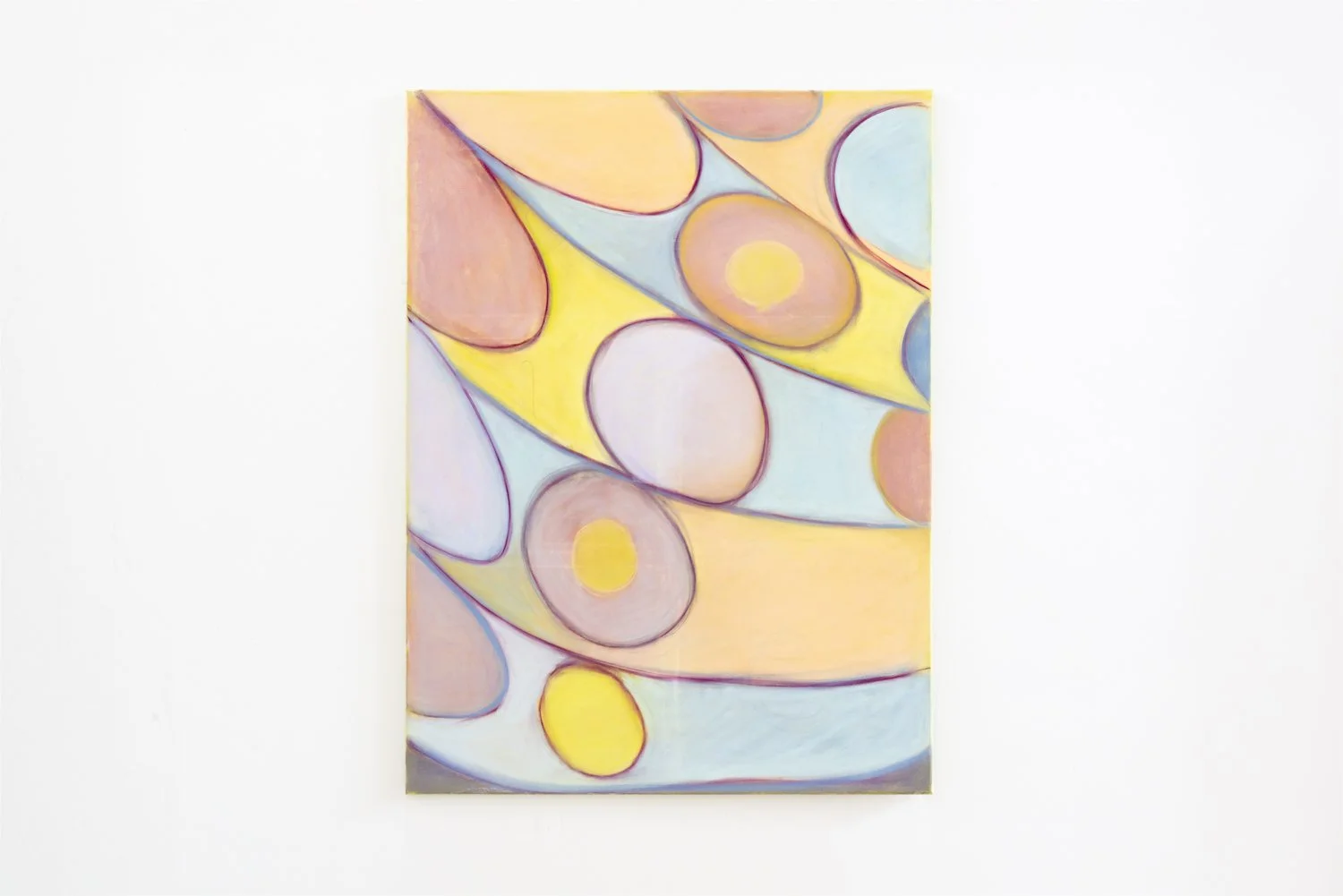
Harmonising With My Kitchen Fan
A group exhibition by Madeline Minack, Hayley Does, and Iona Mackenzie.
Mackenzie, Does and Minack present a disruptively dewy-eyed exhibition, Harmonising With My Kitchen Fan. The collection of painting, sculpture, and performance emerges from a distinctly emotional persuasion—one that recognises the subversive power of the sentimental and subjective against contemporary fascism. From the trio’s tender musings arises the argument that emotional depth—a matrilineally learned trait—is key to disarming oppressive powers. Like the plastic bag scene in Sam Mendes’ American Beauty, this collection draws poetry from mundanities. Our daily approach to the world impacts the pace of sociopolitical progress; a sentimental outlook encourages us to tune in to ourselves, others, and our environments.
Exhibition text below by Georgia Smedley.








Harmonising With My Kitchen Fan
exhibition text by Georgia Smedley
Harmonising With My Kitchen Fan unifies the practices of Hayley Does, Iona Mackenzie and Madeleine Minack in a disruptively dewy-eyed meditation on sentimentality. Spanning painting, sculpture and performance, the exhibition casts sentimentality as a political act rather than a passive one. It offers a soft belly in response to the blade, defying a cultural insistence on neutrality and distance (from ourselves, from each other).
In approaching the task of writing this essay, I contemplated whether audiences would arrive to the concept with the same willingness to surrender to sentimentality as myself and the artists do. I thought about whether they might recognise, or even be willing to recognise, the magnitude of sentimentality and the ways it binds the edges of our experiences, assigning meaning to the sediment of ordinary living; moving forward, looking backward.
In my own ordinariness, the notes app on my phone is filled with years of drivel, of dinner orders, of proposed and abandoned exhibition titles, passwords, lists of things I’d wanted to profess to an old lover in desperate attempts to articulate a profound-something.
As a self-identified inbox-purist, who'll habitually remove anything irrelevant to my immediate needs or interests, these notes are an outlier that I can't bring myself to delete. For these long years, the app has acted as a captain’s log for fragments of personhood, each entry steeped in the wash of its occasion.
16 September 2018 at 11:41 pm
Ancient memory
Closer
Leave/closer
Partial view
Critical Mass
Collective memory
I have never been happier than right now
The assertion of a gentleness
Polite body
Flood line
The writing is not profound by any means, but it carries the weight of having been lived, of having mattered in that instant. This stuff, everything I place resonance in, becomes the thing I can be assured of. It testifies, through the tacit medium of text, that I am or was part of something greater than myself. It proves that my days, digital gestures and fleeting moods pressed themselves into the fabric of the world, however discreetly.
These loose scraps of memory, mundane and deeply ordinary, root me in the world and tether me to people and histories that tap at my chest. Whether they were practical or romantic, their context matters very little. They remind me that sentiment is not trivial decoration, but the very evidence of life as it was felt. I hold onto this with a persistence that borders on excess, though perhaps sentimentality has always carried that charge.
3 August 2022 at 6:45pm
Fries x 3
Polpette al sugo
Delicata
Parmagiana di melanzana
Orecciette al pomodoro con burrata
Pollo
All of this is to say that (and as Robert Solomon puts it in In Defence of Sentimentality) even unreasonable love has its reasons; this is why, despite being given rational grounds to not feel something, we often feel it anyway. That persistence of feeling and the meaning we assign to big and small moments (beyond the acceptable), given the ~state of things~ is what allows us to engage with the world in a weighted register. To me, this makes sentimentality a form of resistance against detachment, not only in politics or art, but also in the private debris of ordinary living.
For Iona Mackenzie, sentimentality surfaces through hand-driven processes: gestural strokes, glued fragments, uneven forms and embellishments drawn from domestic spaces and childhood craft. These practices honour her matrilineal inheritance of empathy, care and intuition. Hayley Does carries sentimentality into the body, using her dance training to frame it as a site of memory, survival and politicised labour, where endurance and repetition become charged expressions of feeling.
Alongside them, Madeleine Minack pursues sentimentality through accumulation, reshaping discarded objects into intimate installations that unsettle hierarchies of value. She lingers on everyday remnants, allowing them to slip their functional pasts and take on romantic new lives that speak to the attachments we form with even the slightest of objects.
It should be said, finally, that sentimentality is not always grounded in nostalgia. At times, it emerges directly in the present, in what is immediately in our line of sight, and acquires meaning through processes of attribution. Much like the circulation of currency, its value depends on a collective agreement – a form of buy-in. The difference being that when the rapture finally does come, cash won’t hold regardless of how much value has been assigned to it. But maybe film suggestions from my uber driver will.
Harmonising With My Kitchen Fan reminds us that sentimentality gathers power in its excess, not in spite of it.
